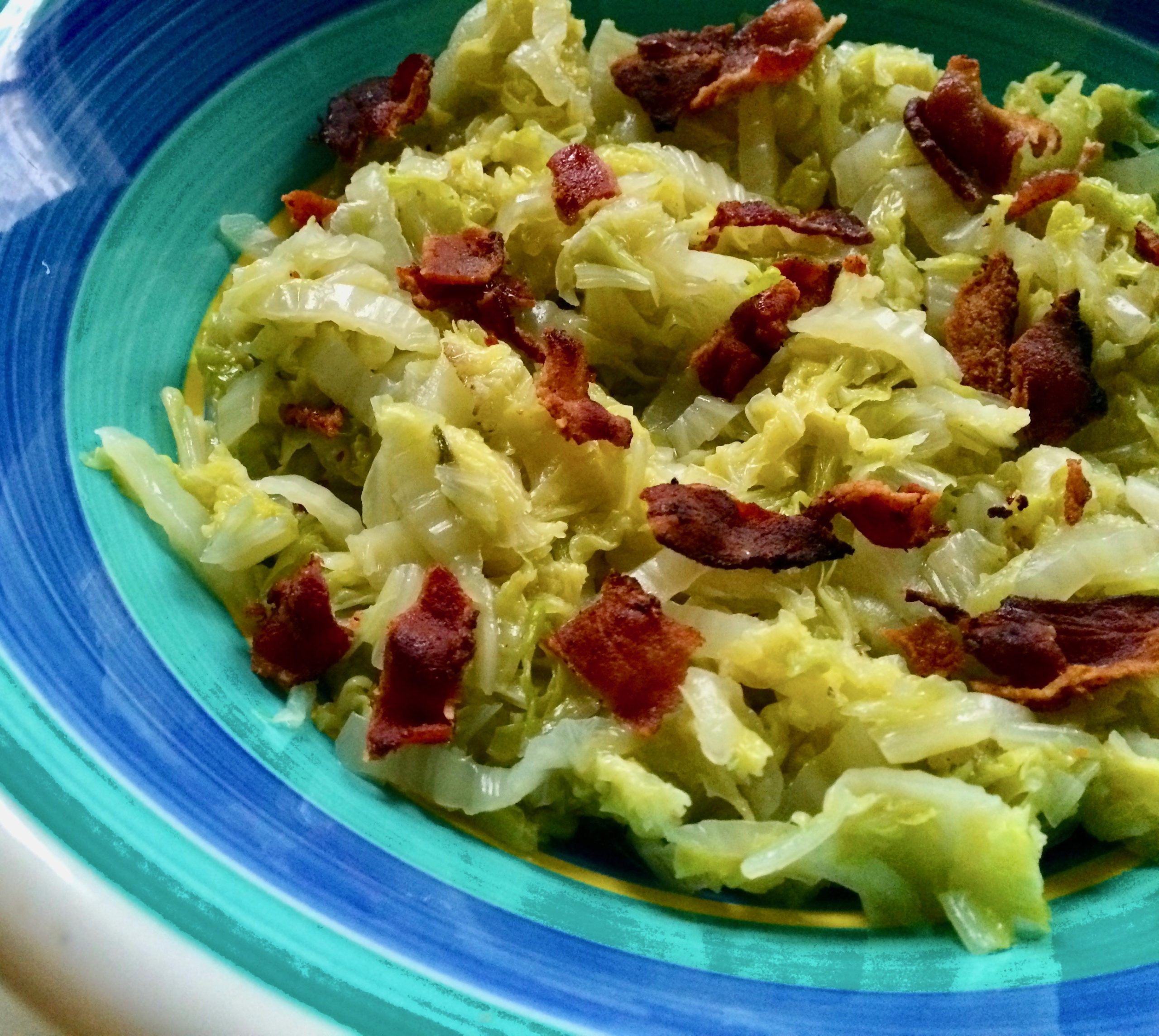The roots of Irish cooking hark back to the farm and garden, and the classic Irish dish Bacon and Cabbage is a tribute to both. Many families grew their own vegetables and raised their own pigs. Traditional Irish fare is homey, unpretentious and based on ingredients at hand. The Irish have enjoyed pork since medieval times, and curing was a good way to preserve the meat and add flavor. Only the leg of the pig is called “ham”—everything else was known as bacon or pork. “Rashers” are what Americans think of as bacon.
Old World-style “Bacon and Cabbage” actually consists of a trifecta of ingredients: boiled bacon (or smoked shoulder), boiled cabbage and boiled potatoes. It’s usually served with a whole-grain mustard sauce or a white sauce, consisting of flour, butter, milk and parsley.
Cabbage is a nutrient-dense super food. A rich source of antioxidants, cabbage has anti-inflammatory and anti-cancer properties. It’s low in calories, high in fiber and a good source of vitamins K, C and A, potassium and absorbable calcium. Regular consumption of cabbage supports digestive health and heart health.
As we transition into spring, cabbage also has cleansing benefits; it’s high in glucosinolates, sulfur-containing compounds that convert to isothiocyanates, which helps improve the body’s detoxification system. Ideally, cabbage is a cruciferous vegetable that you eat often. If it’s not, the addition of bacon may make the idea of eating cabbage more palatable to kids and fussy adults!
While I enjoy bacon on occasion, I will admit that I’m not a fan of the common cabbage. In my revisionist, stripped down version of Bacon and Cabbage, I substitute the sweeter and more delicate-tasting Napa cabbage for regular cabbage. And I braise the cabbage rather than boil it. I use organic, nitrate-free bacon and omit the potatoes. And no mustard sauce or white sauce. Simple, but delicious and satisfying.
Bacon and Cabbage 2.0
2-1/2 to 3 pounds Napa cabbage, end discarded
6 slices of organic nitrate-free bacon
6 cloves garlic, thinly sliced
2 tablespoons rendered bacon fat, olive oil or duck fat
Celtic sea salt, to taste
To prepare cabbage (CLICK HERE FOR “HOW-TO” VISUAL):
Peel individual leaves from the Napa cabbage, leaving each leaf intact. Wash well and place cabbage leaves in colander. Stack 4 or 5 cabbage leaves together, shaking off any excess water. Julienne, by cutting crosswise into 1/2 inch slices down the length of the stacked cabbage leaves. Place julienned cabbage in a large bowl and set aside.
To cook:
Place bacon in a Dutch oven over medium heat, turning frequently, cooking about 2 to 4 minutes. Transfer to a plate and set aside.
Leave the rendered bacon fat in the Dutch oven (there should be about 2 tablespoons; if you don’t want to use bacon fat, you can also use olive oil or duck fat). Heat the fat over medium heat; when hot (but not smoking), add the garlic, stirring about 30 seconds. Add the Napa cabbage, making sure all the cabbage is coated with fat. When the cabbage begins to stick to the bottom of the pot slightly, add 1/2 to 1 cup of water, as needed. When the mixture comes to a boil, reduce heat and simmer about 10-15 minutes or until cabbage is cooked through.
Using a slotted spoon, transfer cabbage to a serving dish. There will likely be residual cabbage juice—I usually pour into a mug and drink it! Lightly season cabbage with Celtic sea salt. Crumble bacon over top.
Enjoy!


